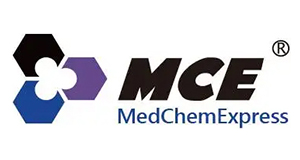Naloxone, CAS 465-65-6
Naloxone, CAS 465-65-6
SKU
MEXHY-17417A-200
Packaging Unit
200 mg
Manufacturer
MedChemExpress
Availability:
loading...
Price is loading...
Product Description: Naloxone is an antagonist of Opioid receptor. Naloxone alleviates opioid-overdose-induced respiratory depression. Naloxone may cause pulmonary edema and cardiac arrhythmias[1].
Applications: Neuroscience-Neuromodulation
Formula: C19H21NO4
References: [1]McIntosh TK, et al. Beneficial effect of the nonselective opiate antagonist naloxone hydrochloride and the thyrotropin-releasing hormone (TRH) analog YM-14673 on long-term neurobehavioral outcome following experimental brain injury in the rat. J Neurotrau/[2]Sun L, et al. Endocannabinoid activation of CB1 receptors contributes to long-lasting reversal of neuropathic pain by repetitive spinal cord stimulation. Eur J Pain. 2017 May;21(5):804-814./[3]Izquierdo I, et al. Effect of ACTH, epinephrine, beta-endorphin, naloxone, and of the combination of naloxone or beta-endorphinwith ACTH or epinephrine on memory consolidation. Psychoneuroendocrinology. 1983;8(1):81-7./[4]Soteropoulos GC, et al. Neuromuscular effects of morphine and naloxone. J Pharmacol Exp Ther. 1973 Jan;184(1):136-42.
CAS Number: 465-65-6
Molecular Weight: 327.37
Compound Purity: 99.71
Research Area: Neurological Disease; Cancer
Solubility: 10 mM in DMSO
Target: Opioid Receptor
Applications: Neuroscience-Neuromodulation
Formula: C19H21NO4
References: [1]McIntosh TK, et al. Beneficial effect of the nonselective opiate antagonist naloxone hydrochloride and the thyrotropin-releasing hormone (TRH) analog YM-14673 on long-term neurobehavioral outcome following experimental brain injury in the rat. J Neurotrau/[2]Sun L, et al. Endocannabinoid activation of CB1 receptors contributes to long-lasting reversal of neuropathic pain by repetitive spinal cord stimulation. Eur J Pain. 2017 May;21(5):804-814./[3]Izquierdo I, et al. Effect of ACTH, epinephrine, beta-endorphin, naloxone, and of the combination of naloxone or beta-endorphinwith ACTH or epinephrine on memory consolidation. Psychoneuroendocrinology. 1983;8(1):81-7./[4]Soteropoulos GC, et al. Neuromuscular effects of morphine and naloxone. J Pharmacol Exp Ther. 1973 Jan;184(1):136-42.
CAS Number: 465-65-6
Molecular Weight: 327.37
Compound Purity: 99.71
Research Area: Neurological Disease; Cancer
Solubility: 10 mM in DMSO
Target: Opioid Receptor
| SKU | MEXHY-17417A-200 |
|---|---|
| Manufacturer | MedChemExpress |
| Manufacturer SKU | HY-17417A-200 |
| Package Unit | 200 mg |
| Quantity Unit | STK |
| Product information (PDF) |
|
| MSDS (PDF) |
|

 Deutsch
Deutsch










